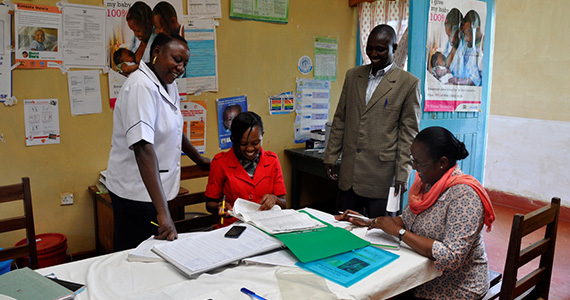
Amina Ismail, right, checks appointment registers for cases of polio – an essential part of surveillance efforts to trace this devastating disease. WHO/L.Dore
By Michael Zaffran, director of polio eradication for the World Health Organization
In a small health clinic in Tharaka Nithi, Kenya, Amina Ismail pours over a register documenting all of the doctors’ appointments from recent months, a nurse by her side. She is checking every record for symptoms of polio – the sudden onset, floppy arms and legs that signify acute flaccid paralysis.
As they work, she checks that the nurse knows what the symptoms are, and that she knows what she has to do if a child with acute flaccid paralysis is brought to the clinic. This detailed surveillance for polio, working hand in hand with those who know their communities best of all, has been the linchpin of the work of the Global Polio Eradication Initiative (GPEI).
Surveillance officers like Amina work and volunteer around the world with one aim: the eradication of the poliovirus. Networks of health workers, traditional healers, religious leaders, teachers and parents have helped us identify paralyzed children; and then by testing their stool samples in laboratories, we can find out …read more
Source:: Rotary International Blog
Leave a Reply
You must be logged in to post a comment.